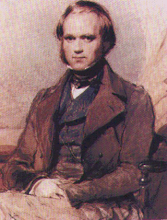
How can geologists use rocks to create a chronology of Earth history?
To address this issue we need to understand the basic measure of time.
The orbit of the Earth around the Sun measures a year, the rotation of the Earth on its axis defines a day, and the vibration of the Cesium atom in an observatory near
A year is measured by the change in the position of the Earth in its orbit relative to the sun; a day is measured by change due to Earth’s rotation, and a second is measured by the change in position of a vibrating atom. Change is the fundamental measure of time.
Changes are recorded in rocks, for example, the layers of sedimentary rock record periods of deposition alternating with periods of non-deposition; metamorphic rocks record change from a previous non-metamorphosed state, igneous rocks record the change of cooling from a molten state to a crystalline state. So it’s valid to use rocks as geochronometers in sorting out the history of the Earth.
The "spiral of time" graphic (a classic!) can be found here, along with more information.


No comments:
Post a Comment